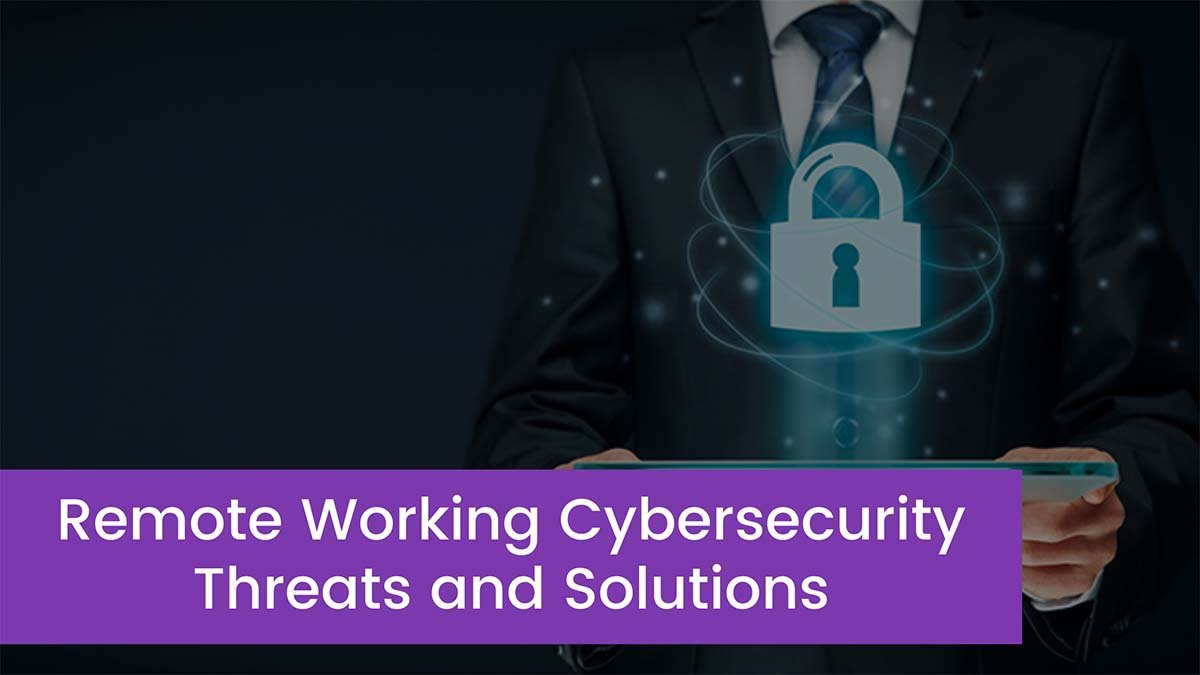In recent years, we have witnessed a massive transition to Remote Working Cybersecurity Threats and Solutions. It was the only ideal option necessary for office-based organizations that needed to continue with their normal operations during the COVID-19 pandemic. The remote working environment has impacted the notion of business to a more significant extent.
There are lots of benefits that have been realized since the inception of remote-working. A Gartner survey reveals that 80% of company leaders plan to continue remote working even after the pandemic. Upwork also shows that remote working is here to stay, with 36.2 million projected to be working remotely by 2025.
However, although most organizations globally are now adopting remote working, many risks come with it. For instance, cybersecurity threats targeting remote workers have been increasing over time. HP Wolf Security Blurred Lines & Blindspots Report reveals that the remote working landscape has created novel cybersecurity risks for organizations, individuals, and their data. The report shows that there has been a 238% in cybersecurity threats due to remote working.
Let us now look at some of the remote working security risks and finish by looking at some of the solutions that you can instigate to prevent them.
In cybersecurity, nothing is guaranteed. So, after putting in place all the security measures mentioned above, your remote workforce may still be vulnerable to data breaches. To minimize the extent of the impact that might come with unforeseen events, it would be wise to backup your remote working data more frequently. Therefore, do not forget to make backups of Microsoft 365 and Google Workspace or any other applications important to you. Doing this will ensure that your business continues operating long after your remote work has been compromised.
Remote Working Cybersecurity Threats
1. Phishing Attacks
One of the most predominant threats that have affected remote working is phishing attacks. For instance, remote working emails have been on the rise.
Phishing schemes usually involve a cybercriminal masquerading as a genuine or legitimate source. The criminals target remote workers by sending them malicious attachments or links. Upon downloading these links or attachments, the remote worker could download a malware attachment that could compromise the entire system.
2. Insecure Home Wi-Fi
Because remote working might call for network connectivity, remote workers tend to use their home Wi-Fi to perform their jobs. Unfortunately, there are a lot of security threats that come with using insecure home Wi-Fi. As it occurs, the only security measure that most remote workers use to secure their Wi-Fi is by using passwords. And it is not for security purposes but to prevent neighbors from accessing the Wi-Fi. However, hackers can quickly get past such passwords and sniff into your organization’s data.
3. MalwareAttacks
The remote working environment opened up a floodgate to malware attacks such as ransomware attacks. We have seen ransomware attacks roaring in the headlines almost every day. The US colonial Pipeline attack that saw a $4.4m ransom payment is just one perfect example of how the malware attacks hit the current work-from-home environment.
4. Use of Personal Devices
To properly run their functions, remote working employees have been forced to use their own devices. Usually, these devices are not well-equipped with security tools such as anti-malware software and firewalls. As such, they leave sensitive user data exposed to cybersecurity threats such as malware infections.
The above-mentioned four threats are just some of the many threats that come with remote working. To ensure that you stay safe from such threats, you must implement a sound, remote working security strategy. The following are some tips that you can implement to safeguard your remote work from cybersecurity threats.
Remote Working Cybersecurity Solutions
1. Install Secure Socket Layer (SSL) Certificate
Another vital security protocol that you should consider for your remote work is the SSL certificate. Remote working might involve the exchange of critically sensitive data between web servers and web users. To ensure that the information is safeguarded from intruders who want to intercept the communication for malicious reasons, you need an SSL certificate.
The SSL certificate should be made an essential element of your remote workforce security. It encrypts all the in-transit PII such as credit card details, debit card details, financial details, etc. If your remote working environment involves exchanging such sensitive data, then it would be wise to purchase an SSL certificate. Several cheap SSL certificates can be effective for your remote workforce security. The good thing about cheap SSL certificates is that they provide the same encryption levels as the most expensive SSL certificates.
2. Constant System and Software Upgrades
Conducting regular software updates is an essential cybersecurity procedure that you ought to follow. The software and operating system that you use for remote working will become obsolete over time. Obsolete software might pose potential cybersecurity threats that could leave your remote working in tatters.
Apart from enhanced functionalities, software upgrades come with improved security features that could help safeguard your remote working data against potential cybersecurity vulnerabilities. As a best practice, always ensure that you run the update once it pops up on your computer screen. Postponing the upgrade is like choosing to live with the security loopholes that could potentially compromise your remote work.
3. Best Password Hygiene
The first solution towards protecting your remote work from cybersecurity vulnerabilities is by adhering to the best password hygiene. You must formulate a discrete password policy that all your remote working employees should adhere to.
Weak passwords form the most accessible link, which a hacker can use to compromise your remote workers. Weak passwords have been said to cause 81% of all data breaches. All remote workers must adhere to the following good password hygiene;
● Password Length- Ensure that your remote workers use passwords that are more than seven characters in length. Hackers find it hard to guess their way through a long password.
● Password Complexity- As a rule of thumb, the more complex a password is, the stronger it will be. A complex password uses both numbers, letters, and special characters. Using numbers alone or letters without blending them could make your passwords vulnerable. Furthermore, it is essential to consider combining both lowercase and uppercase letters in your passwords.
● Avoid Using Obvious Passwords- It is not wise to use names of apparent things such as your favorite football team, pet name, or nickname. These are things that a hacker can quickly figure out and use to compromise your remote working accounts.
● Do Not Reuse Passwords- 60% of people tend to reuse passwords across multiple platforms. Imagine a situation where you are using a single password for all your remote working accounts. This is dangerous because all a hacker will need to do is figure out the single password, and all your remote working accounts will be in great jeopardy.
4. Have a Clear and Elaborate Cybersecurity Remote Working Policy
To ensure that all your remote workforce adheres to the best security measures, you must have an elaborate cybersecurity policy to guide your remote workers through what should be done.
The cybersecurity policy will help to create a cybersecurity culture. Those who do not adhere to the guidelines should be brought to books.
5. Learn to Detect and Prevent Phishing Schemes
Phishing threats are one of the significant issues affecting remote working. As such, you must ensure that you enlighten your employees about how to identify phishing schemes. Employees should first authenticate the source of the code or link before rushing to download an attachment or clicking on a link.
6. Use Virtual Private Networks
A Virtual Private Network will allow you to create a secure connection to all your remote working connections. It will help to shield your remote workforce from prying eyes on public Wi-Fi. Because remote working might require that you use a home Wi-Fi, it would be prudent to acquire a Virtual Private Network to help beef up the security of your remote workforce.
7. Encourage Remote workers to Back-Up Their Data More Frequently.
In cybersecurity, nothing is guaranteed. So, after putting in place all the security measures mentioned above, your remote workforce may still be vulnerable to data breaches. To minimize the extent of the impact that might come with unforeseen events, it would be wise to backup your remote working data more frequently. Doing this will ensure that your business continues operating long after your remote work has been compromised.
Conclusion
As more and more organizations move to remote working, there is a reason to be worried. Hackers are now targeting remote workers. You need to understand some of the threats that your remote work is vulnerable to. Additionally, you must know some of the remote working cybersecurity solutions that will help protect your remote work from cybersecurity vulnerabilities.



![Read more about the article Windows server Keep Restarting [Fix 2023]](https://wuschools.com/wp-content/uploads/2022/12/Windows-server-Keep-Restarting-2-300x169.jpg)
